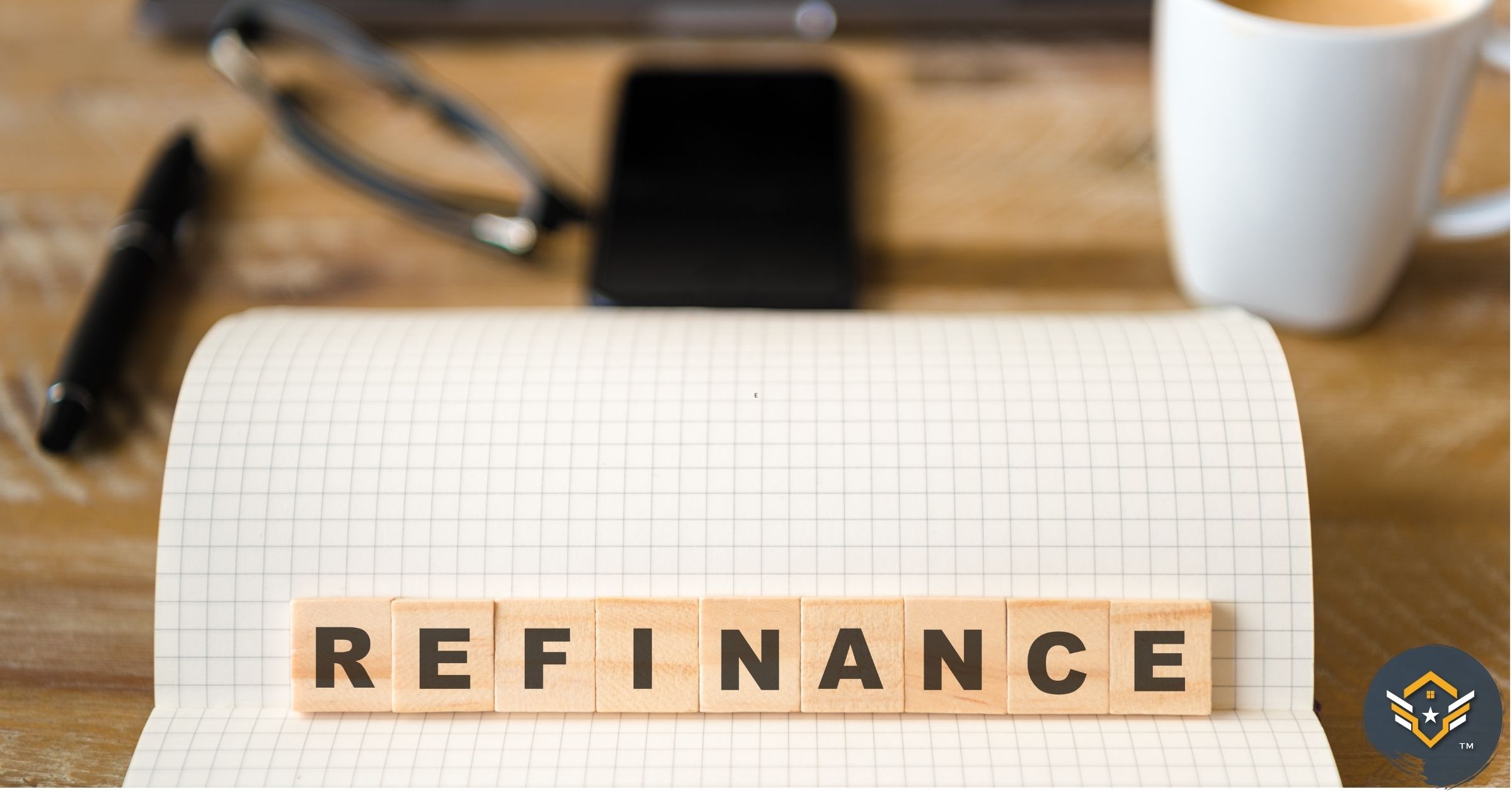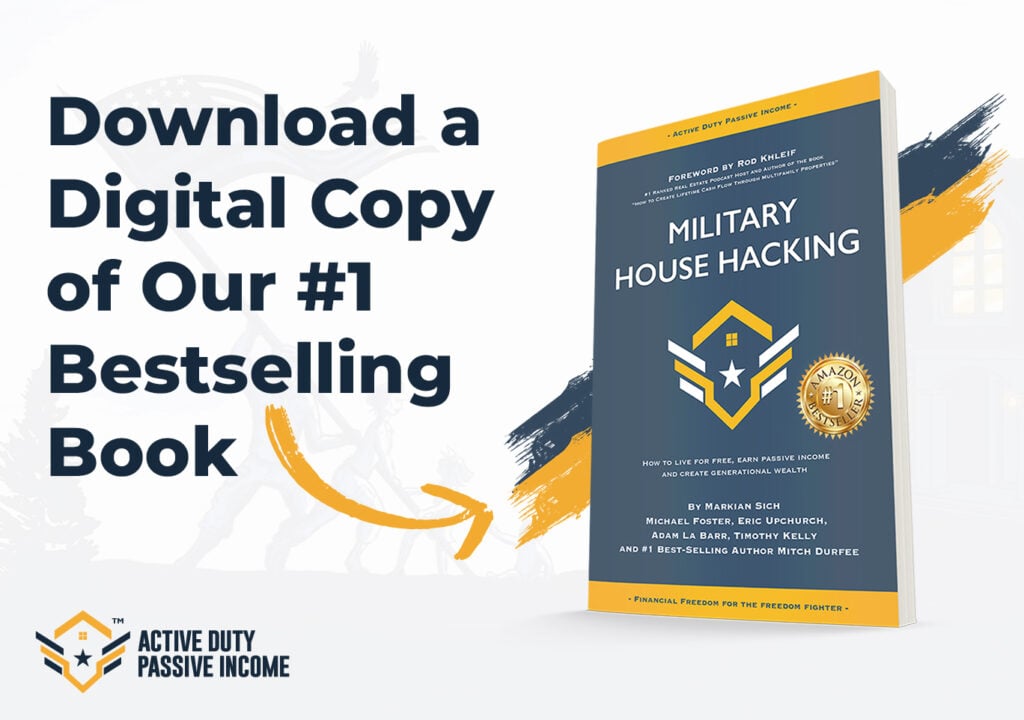When & How to Refinance a VA Loan to a Conventional
One highly advantageous financial benefit of being a veteran is the ability to take out a VA loan to purchase a home. However, there are times when a conventional loan may better serve a particular veteran’s needs. The solution is to refinance.
When and how to refinance a VA loan to a conventional loan is an important financial consideration. Veterans must weigh factors like:
- How do VA loans differ from conventional?
- Why refinance?
- How much equity is needed?
- And more….
Keep reading to learn more about refinancing VA loans as conventional loans.
Refinancing a VA Loan to a Conventional
As we said, a powerful financial tool available to veterans is the VA loan. However, sometimes a conventional loan may be a better choice. Because of this a veteran may wish to refinance.
When and how to refinance a VA loan to a conventional loan is a topic of consideration for many veterans. As such it requires the analysis of many details.
- What is the difference between VA loans and conventional loans?
- Why should a veteran refinance?
- How much equity does a veteran need?
- When should you avoid refinancing?
One of the most obvious advantages of a VA loan is that it does not require a down payment. Similarly, there’s no need to purchase private mortgage insurance (PMI). In contrast, most conventional loans require PMI when the initial down payment is less than 20%.
In lieu of the PMI and down payment, a VA loan may require a small funding fee (usually less than 4% of the loan amount). Of course, if you suffer from a disability connected to your service for which you receive VA compensation, this funding fee is waived. The same is true if you are the spouse of a veteran who died from such a disability or who died in service.
Can You Refinance a VA Loan to a Conventional Loan?
A conventional loan may be used to replace almost any other type of loan. This, of course, includes VA loans.
It is worth noting, though, that conventional loans have stricter rules governing their use even for a refinance of a VA loan. If you can’t meet the requirements these rules impose, you won’t be able to do the refinance. These rules include:
- Stricter credit qualifications (you must have a 640+ credit score)
- Inclusion of PMI if you do not have a minimum of 20% equity in the home
- Your debt-to-income ratio usually needs to be 50% or even lower.
- Your home will likely need a new appraisal.
- You will likely need to produce proof of income.
If you have no difficulty meeting these criteria, you should have little difficulty getting approved for a refinance.
Overview of VA Loans and Conventional Loans
Although conversions can happen back and forth for qualified individuals, VA loans and conventional loans work very differently.
VA Loan
In the case of a VA loan, the VA actually does not lend any money. Rather, what they do is serve to guarantee a portion of the VA loan. The VA loan is then made by a bank, credit union, or other private lender. The guarantee provided by the VA protects such lenders from default. If the veteran stops paying, the U.S. government steps in and reimburses a portion of the remaining balance.
As a result, the lenders involved face far less risk and can pass substantive benefits based on this reduced risk on to the veterans. Some of these benefits include:
- No down payment required.
- No PMI required.
- Competitive Interest rates.
- Streamlined refinancing via the IRRRL program
These advantages make purchasing a first home much easier for veterans.
Conventional Loans
In contrast to VA loans, conventional loans are not backed by the government. So, if the borrower stops paying, the government doesn’t step in to reimburse the lender. In such a case, the lender assumes all the risk of the loan.
As a result of this, conventional loans generally don’t offer the kinds of advantages that VA loans do. They usually require a down payment with PMI, if necessary, etc…
Should You Refinance a VA to a Conventional?
Given all the advantages listed above, a veteran with a VA loan may wonder why he or she might want to refinance into a conventional loan. After all, the VA loan seems to offer quite a bit.
However, sometimes there are circumstances where a veteran might want to do just that.
Reasons to Refinance a VA Loan
A veteran may wish to refinance his VA loan for the following reasons:
- Convert Old Home into a Rental Property
- Refinance to a Conventional Loan with Better Terms
- To Make Use of an IRRRL
We’ll discuss each of these in turn.
Convert Old Home into a Rental Property
Most of the time, you cannot use a VA loan to purchase a second property if your first property (your primary residence) is currently financed with its own VA loan. However, a common practice is for the veteran to refinance his existing VA loan (on his primary residence) into a conventional loan.
Then, he can use a second VA loan to purchase a second property which he can move into and make his new primary residence. His old residence can then be converted into a rental property from which he can earn additional income.
Refinance to a Conventional Loan with Better Terms
Another reason to refinance a VA loan into a conventional loan is to establish better terms on the loan. Generally, a veteran wouldn’t do this unless she had been living in her home for a sufficient number of years.
If so, because interest rates fluctuate over time, a present-day conventional loan might offer better terms than her original VA loan that was financed so many years ago. Also, consider the fact that she will have built up equity in her home. If this equity exceeds 20 percent, the fact that VA loans do not require a down payment or PMI becomes unimportant.
This makes the conventional loan that much more competitive and appealing.
Similarly, if a veteran has a high enough credit score, he might be able to get a conventional that just offers better terms than his current VA loan.
To Make Use of an IRRRL
An IRRRL (Interest Rate Reduction Refinance Loan) is a special program offered by the VA for veterans who wish to refinance a VA loan. It serves to streamline the process of refinancing so as to allow the veteran to move into a loan with a lower interest rate.
However, if a veteran has multiple mortgages, she might not qualify for this program. So, she might wish to refinance into a conventional loan, if this is the only way she can get better rates.
Now that we’ve discussed why a veteran would want to refinance a VA loan to a conventional loan, let’s discuss how this is done.
How Do You Refinance a VA Loan to a Conventional?
If a veteran decides he wants to refinance a VA loan to a conventional loan, he should start by organizing his information and then following a step-by-step process to get the task done. There are a number of things that must be taken care of as well as a few other optional details that should be examined.
Evaluate Your Financial Health
The first thing a veteran will need to get a sense of is his overall financial health. This information is necessary for the borrower to give him a sense of where he stands and what he can do going forward. In most instances, much of this information is also required by the lender. After all, the lender has a vested interest in seeing that the borrower is as well off financially as possible.
There are a number of different financial factors the veteran can use to determine his financial health.
- Equity: Although confirming your equity isn’t mandatory, it is a good idea. Similarly, although having 20 percent equity in your home isn’t an absolute necessity, it will save you from paying for PMI. If you do fall short of 20 percent and have to pay PMI, you’ll have to factor that into your monthly budget.
- Debt-to-Income Ratio (DTI): A prospective borrower should also confirm his DTI. The DTI is used to gauge the ability of the borrower to pay back his debt. To formula for DTI is, basically, monthly debt payments / gross monthly income. Most lenders require that the borrower have a DTI no higher than 40 percent. Occasionally, some might accept a DTI as high as 50 percent.
- Credit Score: The prospective borrower must know his credit score. The best terms for conventional loans are usually limited to only those individuals with a credit score of 740 or higher. To be fair, though, some lenders may allow a credit score as low as 620, but the terms may suffer. Basically, the credit score, the better for the borrower.
After evaluating his financial health, the veteran is ready for the next step.
Shopping for a Loan
With all his financial info at hand, a veteran can shop around at various lenders to see if he can get the loan he wants. There are a couple steps in this process.
- Compare Options: In this step, the borrower selects a few local lending prospects and examines the details of what they offer. He should look at things like closing costs, the available APR’s (including fees), and loan terms.
- Apply for the Loan and Close On It: In this step, the veteran provides all his information to the entity with the best offer. He’ll likely have to get a formal appraisal of his home as well as submit whatever other information the lender requires. He’ll close with a real estate attorney or a settlement agent.
- Restoration of Entitlement: This last step is an optional one. If the veteran refinanced his VA loan in order to use it a second time (like in the rental property situation we described above), he’ll need to file some paperwork. To that end, he should contact the regional VA loan center and inquire about a “Restoration of Entitlement.”
That completes the process. If a veteran follows all these steps, he should have little difficulty in refinancing his VA loan.
How Much Equity Do I Need to Refinance to a Conventional Loan?
The particulars of how much equity a borrower needs depends on how much equity the lender requires to grant the loan. If a lender is willing to refinance a loan with only 5 percent equity (to take a random number out of the air), then the borrower is free to take out that loan. Whether or not that is a wise choice on her part is something she must determine.
Generally, the lender wants to make sure that the resulting mortgage payment is an affordable percentage of the borrower’s income. So, it is in the best interests of the lender to prevent the borrower from making an unwise choice. Otherwise, she could default on the loan and the lender really doesn’t want to deal with such a situation.
Additionally, most lenders require the purchase of a PMI for cases where the borrower has less than 20% equity in her home. As noted above, the cost of this PMI should be incorporated in whatever subsequent financial calculations she makes regarding her potential loan. So, this, too, influences the wisdom of the choice.
To avoid the additional cost from a PMI, a borrower might want to reconsider a loan if she does not have at least 20 percent equity in her home. So, 20 percent is recommended amount of equity for such a loan. But it is not required, and, ultimately, the decision rests with the borrower provided the lender agrees.
Other factors that influence the terms of a loan include such things as the borrower’s credit score and her debt-to-income ratio (see above). Equity alone, shouldn’t be a deciding factor.
When Not to Refinance a VA Loan
Now that we’ve discussed why, when, and how to refinance a VA loan into a conventional loan, let’s briefly discuss when it’s not a good idea.
Obviously, it’s not a good idea if after the borrower compares his current VA loan to the available conventional loans, he finds that his VA loan remains the economical choice. This may be due to a number of reasons:
- His current equity may be below 20 percent and the resulting PMI costs might tip the scale away from the conventional options.
- His credit score may be too low. Credit score influences the terms of any loan. Plus, they change over time. If the borrower’s credit score dropped after he obtained his first loan, refinancing to a new loan might be a bad idea.
- Changes in the economy. Interest rates change over time, sometimes for the worse.
- VA occupancy rules might interfere. These rules require you to move into your new home within 60 days of the closing date on the loan.
- The new home is in poor condition. VA rules have stricter requirements regarding homes which might prevent a borrower from purchasing a fixer-upper.
Those are some of the more common reasons for not refinancing a VA loan into a conventional one.
Conclusion
The VA loan is a powerful tool available to veterans wishing to purchase a new home. It has many features and advantages that distinguish it from a conventional loan. Still, sometimes it may be wise to refinance a VA loan into a conventional loan. We hope the above information helps you navigate such situations.
Sources:
How to Refinance a VA Loan to a Conventional Conforming Loan | NASB Blog








